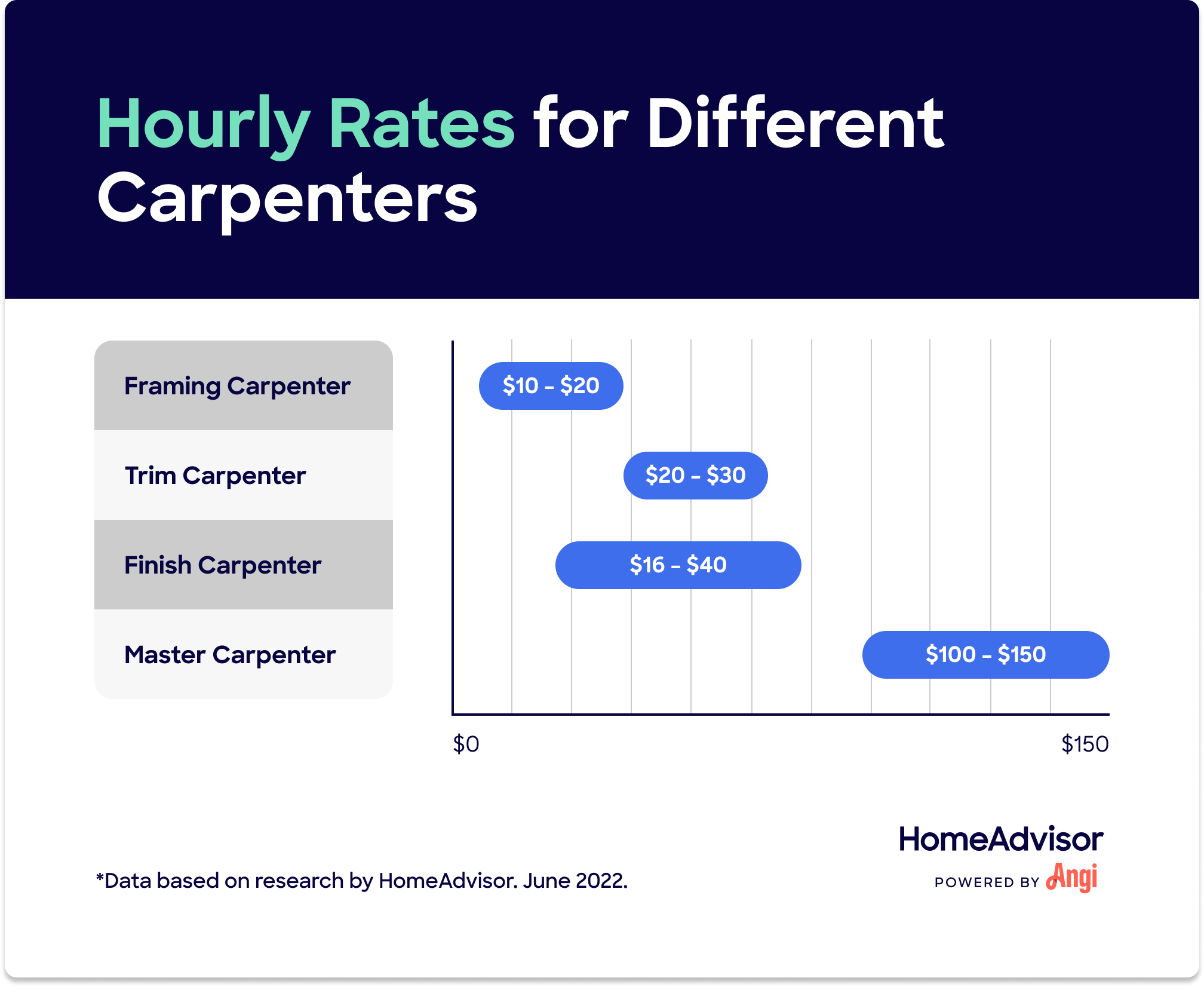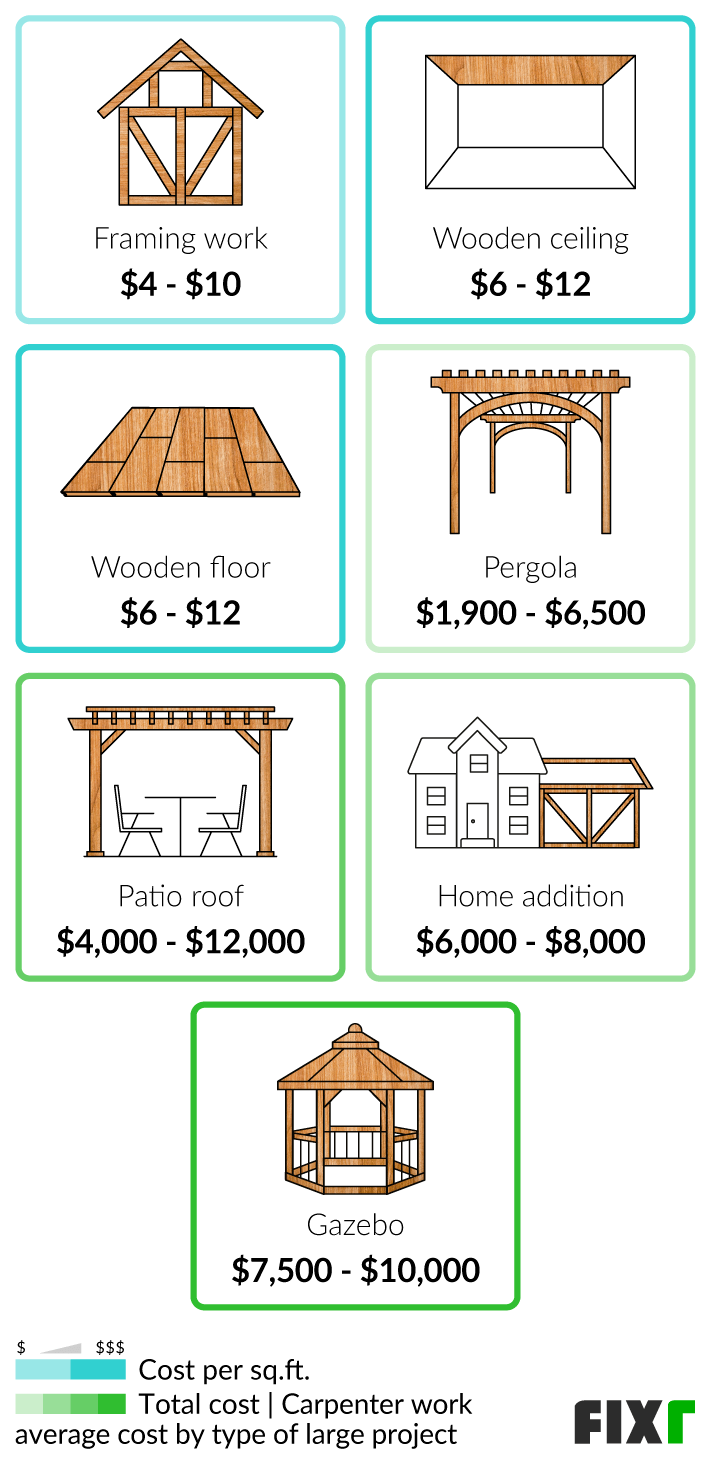Are you curious about how much to charge for finish carpentry? It’s a question that many aspiring carpenters and homeowners often ponder. Well, you’re in luck! In this article, we’ll explore the factors that influence the pricing of finish carpentry services, so you can make informed decisions. So, let’s dive in and discover the world of finish carpentry prices together!
When it comes to charging for finish carpentry, several factors come into play. The complexity of the project, the materials used, and your level of expertise are all crucial considerations. But fear not! We’ll break down these factors and provide you with valuable insights that will help you determine a fair and competitive price for your finish carpentry services. So, get ready to learn the ropes of pricing like a pro!
Now, you may be wondering why it’s so important to understand how much to charge for finish carpentry. Well, setting the right price not only ensures that you’re compensated fairly for your skills but also allows you to remain competitive in the market. By charging an appropriate amount for your services, you’ll attract more clients and build a strong reputation in the industry. So, let’s get started and unravel the mysteries of finish carpentry pricing!
Are you wondering how to determine the price for finish carpentry? Follow this step-by-step guide to help you set your rates:
- Research local market prices for finish carpentry services.
- Calculate your expenses, such as materials and overhead costs.
- Determine your desired hourly rate or project rate.
- Consider your level of experience and expertise.
- Adjust your prices based on the complexity and scope of the project.
- Always communicate transparently with clients about your rates and services.

How Much to Charge for Finish Carpentry?
When it comes to determining how much to charge for finish carpentry, there are several factors to consider. From the complexity of the project to the region you’re operating in, pricing your services can be a challenging task. In this article, we’ll explore the key considerations that go into setting your rates for finish carpentry work, providing you with the insights you need to ensure fair pricing while still maintaining profitability.
Factors to Consider When Setting Your Rates
Before diving into the specifics of how to determine your rates for finish carpentry, it’s important to understand the different factors that can influence your pricing decisions. By keeping these factors in mind, you’ll be better equipped to set rates that accurately reflect the value you bring to each project.
1. Level of Experience
One of the primary factors that can impact your pricing as a finish carpenter is your level of experience. If you’re just starting out in the industry, it’s common to charge lower rates to build your portfolio and gain valuable on-the-job experience. As you become more experienced and reputable, you can gradually increase your rates to reflect your expertise.
If you’re an experienced finish carpenter with a strong track record of delivering high-quality work, you can command higher rates. Clients are often willing to pay a premium for the assurance that their project will be completed to the highest standards.
The level of experience also plays a role in the types of projects you can tackle. The more complex and intricate the project, the higher the rates you can charge.
2. Project Complexity
The complexity of the project is another critical factor in determining your pricing as a finish carpenter. Projects that require intricate craftsmanship, unique designs, or custom-made elements usually demand higher rates.
When assessing project complexity, consider factors such as the level of detail, the number and complexity of joints and connections, and the use of specialized materials. These factors can significantly impact the time and effort required to complete the project, which should be reflected in your pricing.
Additionally, projects that require specialized skills, such as restoring historic woodwork or working on high-end custom homes, often command higher rates due to the expertise and attention to detail required.
3. Market Factors
Understanding the market dynamics in your area is crucial when determining appropriate pricing for finish carpentry. Factors such as supply and demand, competition levels, and local economic conditions can all influence the rates you can charge.
If you’re operating in a region with a high demand for finish carpentry services and limited competition, you may have more flexibility to set higher rates. Conversely, in areas with a saturated market and strong competition, you may need to adjust your rates to remain competitive.
Researching local market rates and staying informed about industry trends can help you stay competitive and ensure your rates are in line with the local market expectations.
4. Overhead Costs
It’s essential to consider your overhead costs when determining your rates as a finish carpenter. Overhead costs include expenses such as insurance, tools and equipment, transportation, marketing, and administrative costs.
Calculating your overhead costs and factoring them into your pricing ensures that you’re covering your expenses and achieving a sustainable profit margin. Failure to consider overhead costs could result in underpricing your services and negatively impacting your bottom line.
While it’s important to be mindful of your expenses, it’s equally crucial to avoid overpricing your services. Researching industry standards and benchmarking against your competitors can help you strike the right balance between profitability and competitiveness.
Key Takeaways: How Much to Charge for Finish Carpentry?
- 1. Determine your hourly rate and factor in the time required for a project.
- 2. Consider the complexity and expertise required for the carpentry work.
- 3. Research the average rates charged by other finish carpentry professionals in your area.
- 4. Account for additional expenses such as materials and transportation costs.
- 5. Communicate openly with clients to understand their budget and expectations.
Frequently Asked Questions
Are you looking to charge the right amount for your finish carpentry services? Check out these commonly asked questions to help you determine how much to charge:
1. What factors should I consider when determining my rates for finish carpentry?
When determining your rates for finish carpentry, there are several factors to consider. Firstly, assess your experience and expertise in the field. If you have years of experience and a proven track record, you may be able to charge higher rates compared to someone who is just starting out. Secondly, take into account the complexity and scope of the project. Larger or more intricate projects may warrant higher rates. Additionally, consider the level of demand for your services in your area and the average rates charged by other finish carpenters. Lastly, factor in your overhead costs, such as tools, transportation, and insurance. By considering these factors, you can arrive at a fair and competitive rate.
2. How can I estimate the time it will take to complete a finish carpentry project?
Estimating the time it will take to complete a finish carpentry project is crucial for setting your rates accurately. Begin by breaking down the project into smaller tasks, such as installing trim, building shelves, or hanging doors. Assign a time estimate to each task based on your experience and skill level. Don’t forget to factor in any additional time for unforeseen challenges or delays. It can also be helpful to refer to industry standards or consult with other finish carpenters to get an idea of how long certain tasks typically take. Remember, it’s always better to overestimate the time and finish the project early than to underestimate and rush through the work.
3. Should I charge by the hour or provide a project-based quote for finish carpentry?
The decision to charge by the hour or provide a project-based quote for finish carpentry depends on various factors. Charging by the hour may be suitable for smaller or more unpredictable projects where it’s difficult to determine the exact time and materials needed. It allows you to be compensated for every hour worked, and you can adjust the rates as needed. On the other hand, providing a project-based quote works well for larger, well-defined projects where you can accurately estimate the time and materials required. It gives your clients a clear understanding of the total cost upfront. Consider the nature of the project, your level of expertise, and what would be most convenient and fair for both you and your clients before deciding on the pricing structure.
4. What are some common mistakes to avoid when setting your rates for finish carpentry?
When setting your rates for finish carpentry, it’s important to avoid a few common mistakes to ensure you are compensated fairly for your skills and services. One mistake to avoid is underestimating your worth. Don’t undervalue your expertise and experience, as this can lead to being underpaid for your work. Another mistake is not considering your expenses and overhead costs. It’s crucial to factor in all your costs, such as materials, tools, transportation, and insurance, to set rates that cover these expenses and still leave room for profit. Lastly, be cautious of setting rates solely based on what your competitors are charging. While it’s helpful to be aware of the market rates, make sure your rates reflect your unique skills and the value you bring to each project.
5. How can I effectively communicate my rates to potential clients?
Effectively communicating your rates to potential clients is key to both attracting the right clientele and setting clear expectations. Firstly, be transparent and upfront about your rates. Clearly state your hourly rate or provide a breakdown of costs for a project-based quote. Additionally, highlight the value and quality of your work. Showcase your portfolio or share testimonials from satisfied clients to demonstrate the level of craftsmanship you bring to each project. Another effective way to communicate your rates is by offering package deals or discounts for larger or recurring projects. This can incentivize clients to choose your services over competitors. Lastly, be open to negotiation and discuss the pricing in detail with each client. By fostering clear and open communication, you can build trust and ensure a mutually beneficial agreement.

HOW MUCH DO I CHARGE? – HOW I BUILD QUOTES
Summary
Figuring out how much to charge for finish carpentry can be tricky, but it’s important to consider factors like experience, materials, and location. You should also do some research on what other contractors are charging to get an idea of market rates. Remember, it’s okay to start with lower prices when you’re just starting out, but as you gain more experience and skills, you can increase your rates. It’s important to value your work and ensure that you are being compensated fairly for your time and expertise. Don’t be afraid to negotiate or decline projects that don’t meet your desired price.
In addition to determining your hourly rate, you should also consider other costs like travel expenses, equipment, and business overhead. Keep track of your time and expenses to ensure you are making a profit. Finally, always communicate openly with clients about your pricing and be confident in explaining the value of your services. By following these guidelines, you can confidently set your prices for finish carpentry jobs.
